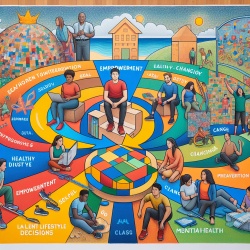Understanding Service Utilization and Barriers in Drug Use Disorders
As practitioners in the field of speech-language pathology and therapy, understanding the broader context of service utilization and barriers in drug use disorders (DUD) is crucial. The research paper titled "Differences in service utilization and barriers among Blacks, Hispanics, and Whites with drug use disorders" provides valuable insights that can enhance our practice and improve outcomes for diverse populations.
Key Findings from the Research
The study utilized data from the National Epidemiologic Survey on Alcohol and Related Conditions (NESARC) to explore racial and ethnic differences in the utilization of 14 types of treatment services for DUD and 27 perceived barriers. Some of the key findings include:
- Approximately 10.5% of the sample met criteria for at least one lifetime drug use disorder.
- Blacks were more likely to use non-professional services such as 12-step programs and clergy services, while Whites were more inclined towards professional services.
- No significant racial and ethnic differences were observed with respect to perceived barriers to drug treatment.
Implications for Practitioners
Understanding these differences is crucial for developing culturally responsive and accessible treatment plans. Here are some ways practitioners can implement these findings:
- Culturally Responsive Services: Tailor interventions to meet the cultural and social needs of different racial and ethnic groups. For instance, incorporating community-based support systems like clergy services for Black populations.
- Broad-Based Educational Programs: Develop educational initiatives that address stigma and promote awareness about the availability and benefits of treatment services across all ethnic groups.
- Accessibility and Affordability: Advocate for policies that increase the availability of affordable treatment options in underserved communities, particularly those with high minority populations.
Encouraging Further Research
The study highlights the need for ongoing research to further understand the nuances of service utilization and barriers among different racial and ethnic groups. Practitioners are encouraged to engage in or support research that explores:
- The impact of regional differences on service availability and utilization.
- The role of legal and social coercion in treatment access and completion.
- Longitudinal studies to track changes in service utilization patterns over time.
By integrating these insights into practice, practitioners can contribute to more equitable and effective treatment outcomes for individuals with drug use disorders.
To read the original research paper, please follow this link: Differences in service utilization and barriers among Blacks, Hispanics, and Whites with drug use disorders.










